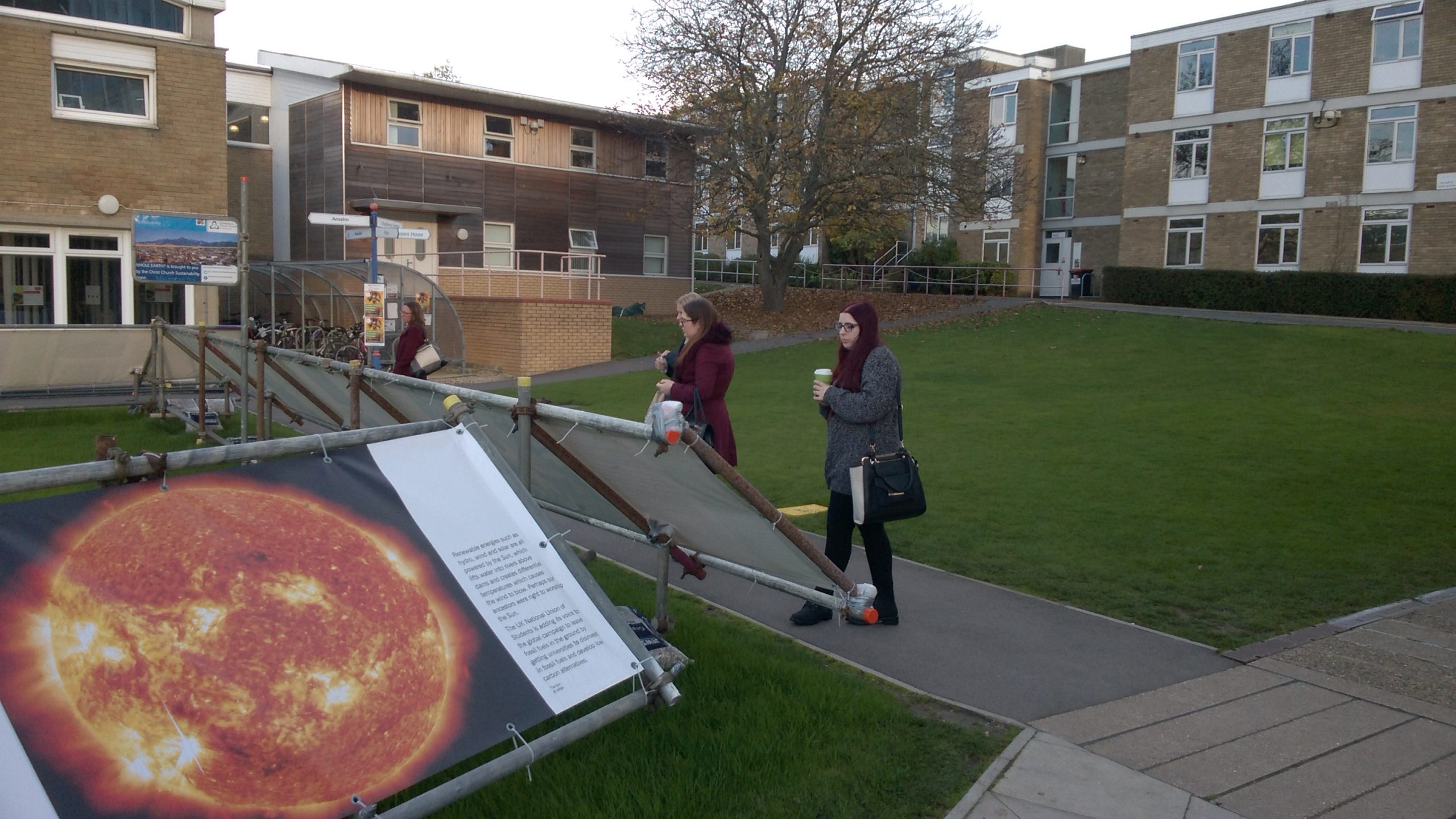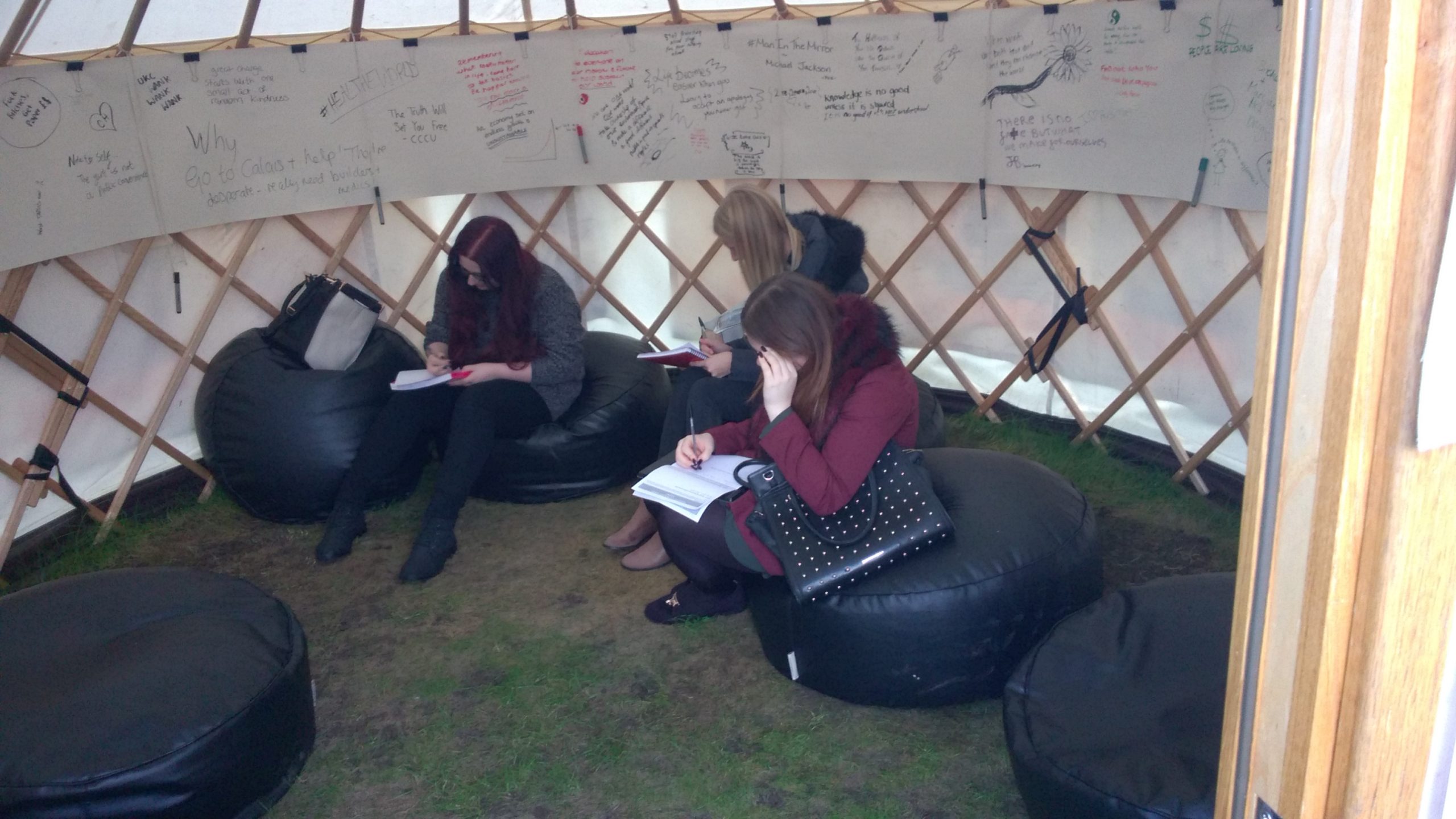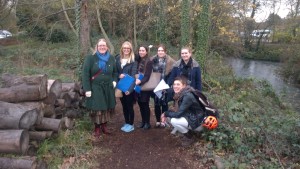11
Dr Katja M Hallenberg & Dr Maryse Tennant
Sustainability is important in all areas of our lives. It has a contribution to make to higher education, our University, our discipline of criminology and criminal justice, but also to us and to our students. Here we discuss why that is, and what we (academics and students alike) have gained from a project that explored the responses of criminology/criminal justice students to the Whole Earth? exhibition.
In 2005 the United Nation’s Decade of Education for Sustainable Development (2005-2014) called for universities to “function as places of research and learning for sustainable development” (UNESCO, 2005 for the full implementation scheme). The roots of education for sustainable development (ESD) are in values-driven/adjectival educational and curriculum movements, and it provides a vision of education that “…seeks to balance human and economic well-being with cultural traditions and respect for the earth’s natural resources” (UNESCO, n.d.). Nationally, the importance of ESD is emphasised in the recent HEA/QAA (2014) Guidance which recognises sustainability at its broadest sense, encompassing areas of global citizenship, environmental stewardship, social justice, ethics and wellbeing, as well as futures thinking. It is notable that these are echoed in the NSS/USS questions, linking the issue of sustainability to excellence in teaching and learning.
Sustainability is also valued at our University where it has developed through gradual organisational embedding (Scoffham, 2016) and is now firmly established as part of the current Strategic Framework. In the criminology programme at Canterbury Christ Church University we have acted on the growing importance of sustainability within higher education with efforts to embed sustainability within the curriculum. This work has been supported by the University’s Futures Initiative, which acts as “a long-term change programme designed to develop understanding about sustainability in academic life” (see the following resources for more information: The FI principles and approaches, Annual Report, Exploring Sustainability Website, and which also helped to fund the current project. In doing this, we have drawn on some of the obvious links in terms of green criminology but we also highlight the ways that the social, economic and cultural aspects of sustainability fit very comfortably in the discipline’s focus on issues of (in)equality and (in)justice (see Agyeman et al, 2003 on justice and sustainability), particularly through the lens of critical criminology. The concept of climate justice too has become increasingly topical, while research warns us of the various criminogenic changes global warming will contribute to: resource scarcity, migration, undermined state security mechanisms including weakening of criminal justice infrastructure and strengthening of illegal markets (Crank & Jacoby, 2015).
The current project was an extra-curricular opportunity offered to criminology and criminal justice students to explore their responses to the Whole Earth? exhibition and to consider the challenges that this raised for criminology as a discipline. The exhibition contains over 60 meters of images and text which highlight the major problems facing humankind and the planet we inhabit, with a focus on solutions and ways to enact positive change. It raises a number of ‘university challenges’ for core disciplines including law and sociology, but there is not a specific challenge for criminology as such. Our project, which is still in progress, involves a number of directed activities, alongside photo and reflection blogging, to encourage students to draw connections between the themes raised by the exhibition and the discipline of criminology. It also aims to refocus the global perspective of the exhibition by enabling students to consider their local context and develop a ‘critical lens’ through which to view the issues of (in)justice and (in)sustainability in their own communities. We tried to embed the principles of ESD into the project and so it is values-driven, collaborative (students as co-authors of any dissemination), authentic (i.e. relating to real-world issues) and locally relevant (UNESCO, 2005; HEA/QAA, 2014). It is hoped that the students will develop an increased awareness of sustainability and justice over the course of the project in ways that will last beyond University as well as facilitating interdisciplinary thinking and developing their critical problem solving skills.
The project is now half way through and it has been an encouraging experience for us and the students. Their initial understandings of sustainability were associated with a narrow environmental interpretation but they were keen to explore and understand the links with criminology. There was also motivation to engage with the project in order to increase awareness and to make a difference. Our first activity involved a session introducing the students to sustainability through the notion of four spheres of justice (environmental, social, economic and cultural), before allowing them to engage with the exhibition and then reflect upon their experience.


Students’ responses were mixed with about half referring to a negative emotional reaction (one spoke of feeling “Sad, powerless and confused”) while others left the exhibition inspired and encouraged to take action. In reflections afterwards students began to make connections to criminology and their local communities through discussion of environmental crime but also issues such as poverty and hate crime/migration.
The second activity involved a direct walk around our city centre in which we visited a community sustainability project, attempted to buy an ‘ethical’ t-shirt using ratings from the Ethical Consumer website, and considered local issues such as food banks and poverty and air pollution. Discussion afterwards in a café/market serving local and sustainable produce began to explore the concept of harm and criminalisation. We discussed our relationship to the global markets which produce the goods we consume and the damage and illegal practices often involved in this, with students maling broad connections between the environment, social justice and responsibility.


For our final activity students have requested that we undertake a volunteering activity in the local community, making real their initial aims of both increasing awareness and taking action. The experiential aspects of the project have definitely contributed to students’ understanding of some core criminological concepts which had previously only been introduced to them in abstract ways and we are looking forward to drawing on the activities undertaken in our efforts to embed sustainability within the criminology curriculum at Canterbury Christ Church University.
References:
Agyeman, J., Bullard, R. & Evans, (2003). Just Sustainabilities: Development in an unequal world. Cambridge, Mass.: MIT Press.
Crank, J.P. & Jacoby, L.S. (2015). Crime, Violence and Global Warming. Abingdon, Oxon: Routledge.
HEA/QAA (2014) Subject Benchmark Statement: Criminology. Available online at: http://www.qaa.ac.uk/en/Publications/Documents/SBS-criminology-14.pdf (Accessed 23/11/2015)
Scoffham, S. (2016) Grass Roots and Green Shoots: Building ESD Capacity at a UK University. In J.P. Davim & W.L. Wilsho (Eds). Challenges in Higher Education for Sustainability. Switzerland: Springer International Publishing.
UNESCO (n.d.) Education for Sustainable Development Information Brief. Available online at http://www.unesco.org/education/tlsf/extras/img/DESDbriefWhatisESD.pdf (Accessed 23/11/2015)
UNESCO (2005). United Nations Decade of Education for Sustainable Development (2005-2014): International Implementation Scheme. Paris: UNESCO. Available online at h/ttp://unesdoc.unesco.org/images/0014/001486/148654e.pdf (Accessed 15/01/2016)
Dr Katja M Hallenberg & Dr Maryse Tennant, Canterbury Christ Church University
